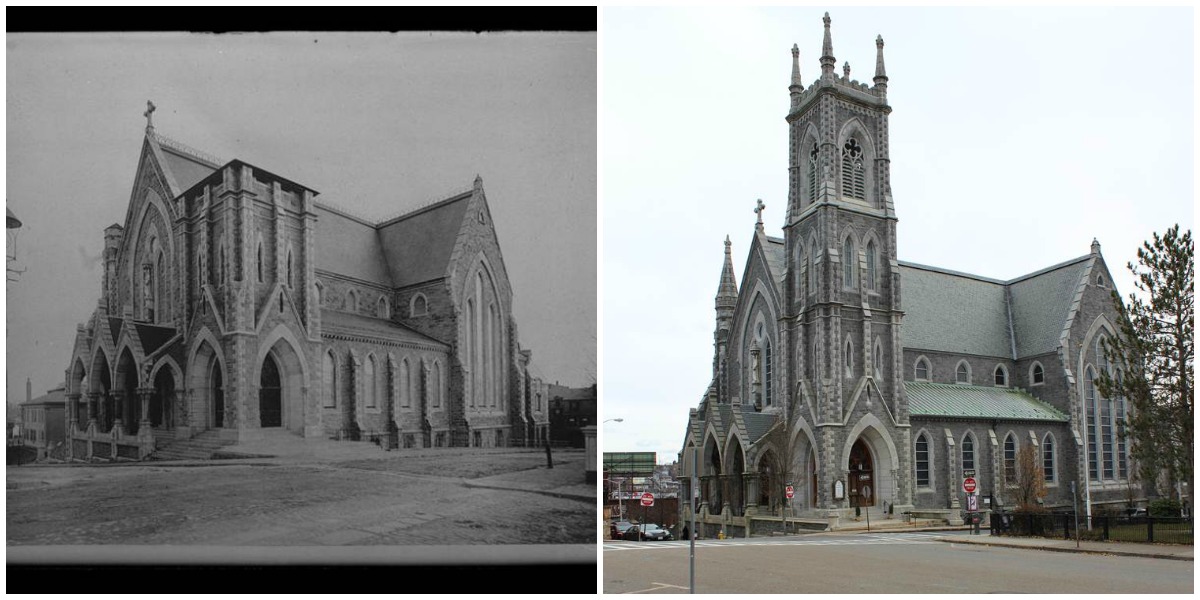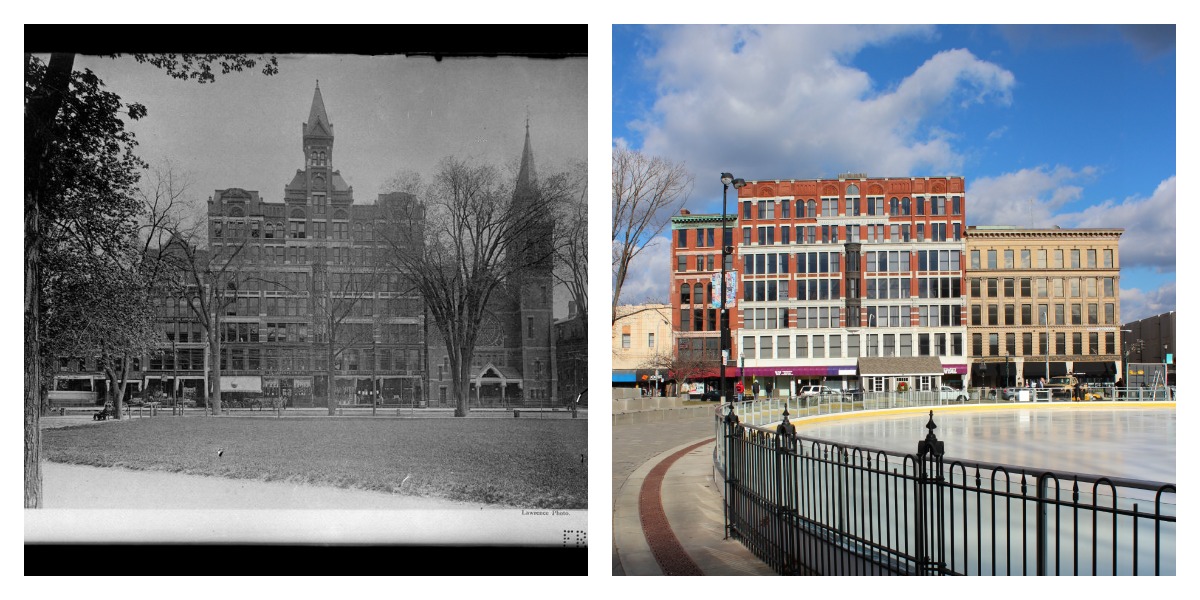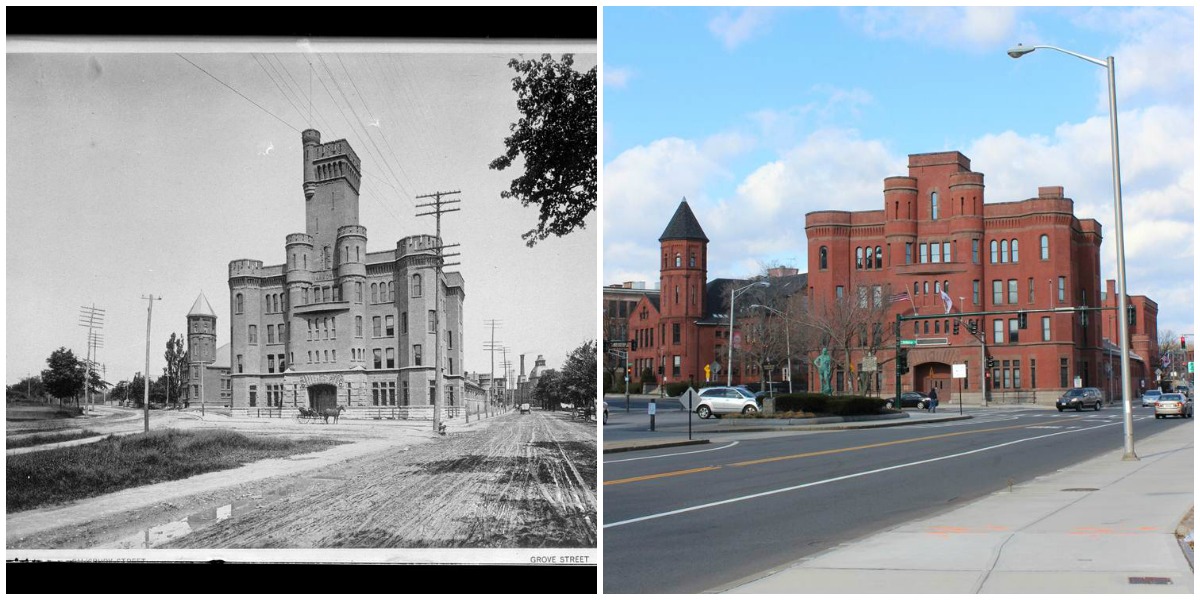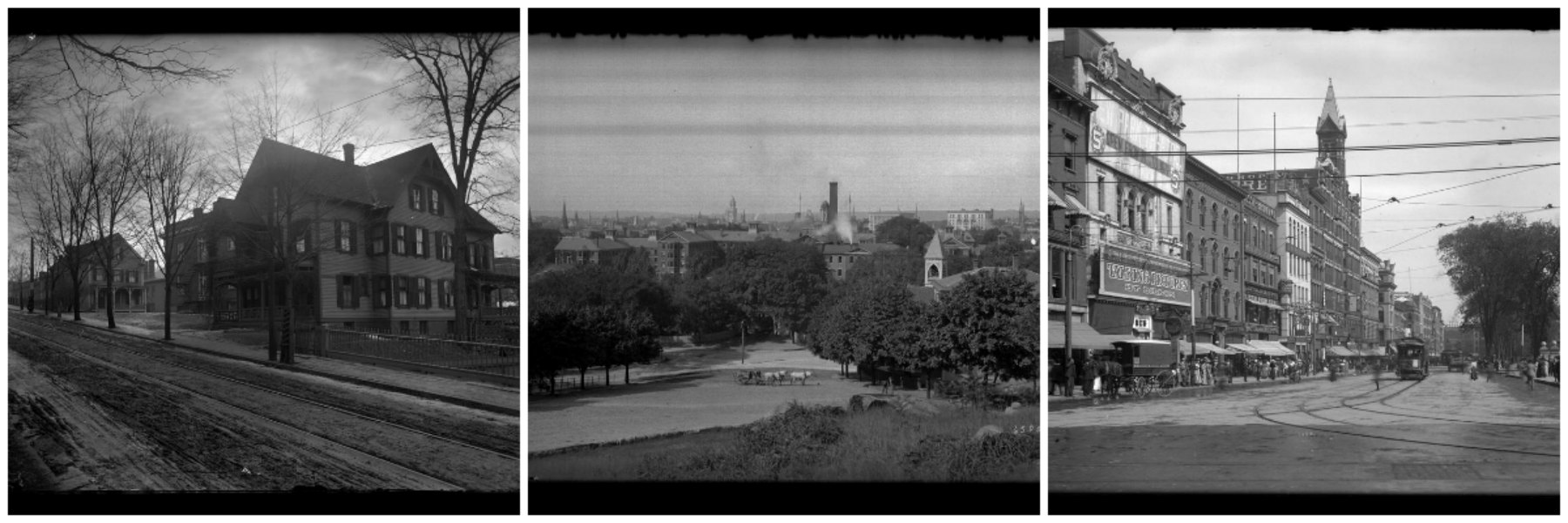If you navigate your way to the AAS online content webpage, you’ll find a link to the Society’s digital image archive, GIGI. In GIGI you’ll discover a searchable database of over 50,000 images from the society’s collection – from maps to manuscripts, war images to newspapers, cartoons, illustrations and more. My personal favorite is the collection of images of architectural subjects captured by Theodore Clemens Wohlbrück at the turn of the 20th century. Type “wohl” into the search field in GIGI, and you’ll be presented with over 100 images from the Society’s collection of Wohlbrück’s glass plate negatives.
Working out of a shop on Worcester’s Main Street from the late 1800s to 1911, Wohlbrück was photographing Worcester at a time when the city was riding high on its self-designation as the “Heart of the Commonwealth.” Just a few years previous, the city had experienced the biggest population boom in its history and some of the city’s grandest and most important buildings were being constructed at this time.
A glimpse at some of these photos stirs up nostalgia for the Worcester of the past, as several images capture the occasional horse drawn carriage, cobblestone and dirt roads, men in top hats, and most importantly, historically and architecturally significant buildings that no longer exist on the Worcester landscape. Shuffling through these Worcester images over and over again, I couldn’t help but compare and contrast what Wohlbrück captured in his 19th and 20th century images to what exists of these buildings today. Though I am most certainly not a professional photographer like Wohlbrück, I thought it would be interesting (and fun!) to show off some of these photos from “back then” alongside images of these buildings as they exist “now.”

As seen here, not only have several of these buildings undergone physical changes, the landscape surrounding them is radically different. Comparing these “before and after” photographs inspires a curiosity about the evolution and history of the buildings themselves, as well as a curiosity about the history of the city. Whatever happened to the utility poles lining the streets in almost every Wohlbrück image? Why are so many of these buildings now missing important architectural features? My research to-do list is a long one.


For me, a look at this collection of glass plate negatives brings so many questions to light, and a look at the before and after shots of these buildings brings so much of their history to life. The buildings have changed, the scenery has changed, and so too has photo technology. The experience of re-creating these more-than-one-hundred year old shots was no easy task when contending with whizzing traffic, construction projects, fences and ditches, widened roadways and narrower sidewalks, less space and more buildings. Although the universe may have been conspiring against me to thwart my attempts at re-creating a Wohlbrück-style photograph, I couldn’t wait to get back to GIGI to find even more images to research and re-create. I hope you’ll find something in GIGI that inspires you, too.



One thought on “Worcester Through Wohlbrück, or, An introduction to photographic resources in GIGI”